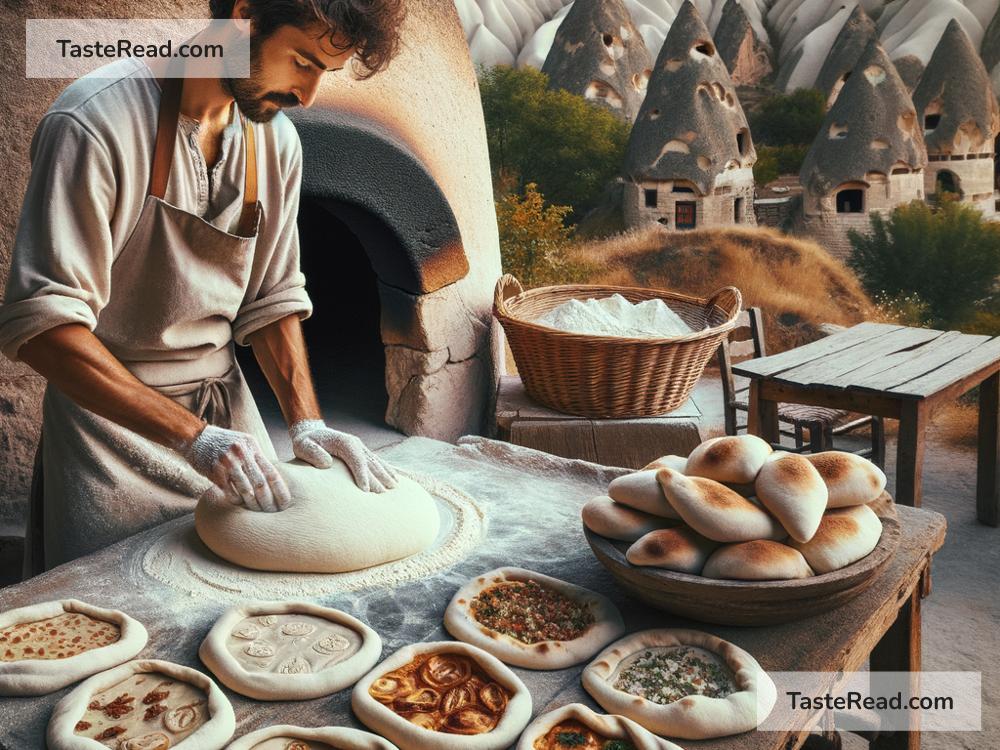Discovering Ancient Pide Baking Techniques in Cappadocia, Turkey
Cappadocia, Turkey is famously known for its magical landscape with fairy chimneys, hot air balloons floating in the sky, and ancient underground cities. However, there’s more to this beautiful region than just its stunning views and fascinating history. Cappadocia is also a treasure trove of culinary traditions, and one of its most beloved foods is pide, often referred to as “Turkish pizza.” While pide can be found all over Turkey, Cappadocia’s unique methods of baking date back centuries, offering a glimpse into ancient techniques that have been handed down through generations.
What is Pide?
Pide is a delicious Turkish bread dish topped with various ingredients like cheese, minced meat, vegetables, or eggs. It’s usually baked into an oval shape, with a fluffy crust on the outside and a rich filling in the center. Each region in Turkey has its own way of making pide, but Cappadocia’s baking techniques and traditions make its pide stand out.
Ancient Baking Techniques in Cappadocia
In the heart of Cappadocia, you’ll find traditional stone ovens known as “tandır.” These ovens are built into the ground and made of clay or stone, giving pide a distinctive flavor that is difficult to replicate using modern ovens. The tandır oven relies on wood-burning heat, which creates a smoky aroma and a perfectly crisp crust. Locals in Cappadocia have been using these ovens for hundreds of years, and they continue to play an important role in the region’s culinary culture.
The process of making pide in Cappadocia begins with preparing the dough. The dough is made with simple ingredients—flour, yeast, water, and salt—and is kneaded patiently by hand until it becomes soft and elastic. It is then left to rise, allowing the yeast to work its magic and create a light, airy texture.
Once the dough is ready, locals roll it out into oval-shaped pieces. Then, they add toppings, which can range from traditional mixtures like sucuk (spicy Turkish sausage) and kasar cheese to seasonal vegetables, lamb, or even a cracked egg for added richness. The toppings are carefully balanced, so every bite is filled with flavor without overwhelming the soft, chewy bread.
The Art of Tandır Baking
Baking pide in a tandır oven is both an art and a skill. The oven is preheated by burning wood inside, creating a high heat that is evenly distributed. When the fire dies down, hot ashes and embers remain, keeping the oven warm for hours. Bakers place the pide inside the oven using wooden paddles and let the intense heat work its magic.
The tandır oven creates a crispy yet soft pide that is unlike anything made with modern gas or electric ovens. The heat caramelizes the edges of the crust, while the smoky flavor adds depth to the toppings. Watching bakers work with tandır ovens is fascinating—they move quickly, yet with precision, ensuring each pide is baked to perfection.
A Sense of Community and Tradition
Part of the charm of discovering ancient pide baking techniques in Cappadocia is the connection to traditional ways of life. For many locals, baking pide in tandır ovens is more than just a cooking method; it’s a way of preserving culture and strengthening community bonds. In villages across Cappadocia, families gather to prepare food together, often sharing stories and laughter as they bake.
Ancient techniques like tandır baking foster a sense of connection to the past. Many of these ovens have been used for generations, and watching someone bake with them is like stepping back in time. The slow pace, careful attention to detail, and reliance on natural heat from wood remind us of the roots of cooking before modern appliances took over.
Experiencing Pide in Cappadocia
If you ever visit Cappadocia, trying freshly baked pide is a must. Many local restaurants and bakeries offer pide, including those still made with tandır ovens. For the best experience, look for small, family-owned establishments where the food is prepared with love and care.
Some villages also offer cooking workshops, where visitors can learn ancient pide-making techniques and bake their own breads in tandır ovens. These workshops are a great way to immerse yourself in Cappadocia’s culture, make memories, and enjoy delicious food all in one go.
Why Pide Matters
Ancient pide baking techniques in Cappadocia highlight the importance of tradition in cooking. In a world where fast food and convenience often dominate, Cappadocia reminds us of the beauty of slowing down and appreciating the artistry behind age-old methods. Pide is more than just food—it’s a story of history, community, and flavor.
So, whether you’re a food enthusiast, a history lover, or simply someone who enjoys a good slice of bread, Cappadocia’s ancient pide-making traditions are sure to leave an impression. From the smoky tandır ovens to the warm smiles of locals, every bite of pide in Cappadocia is a journey back in time.
Discover Cappadocia not just for its landscapes, but also for the delicious pides made with care and history baked into every bite!


